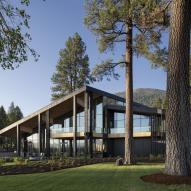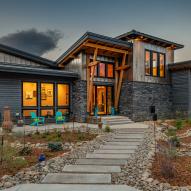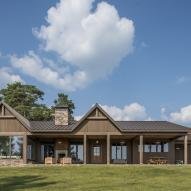Shou Sugi Ban in Session
“There’s a lot of factors that go into the decision of using Shou Sugi Ban, and part of that is the natural aspect of it,” says Allison Hall sales representative for Pioneer Millworks Pacific Northwest & Rockies. “You can’t recreate the look, the really interesting texture and color, without the process of burning the wood. The charring is done with fire, not chemicals, and provides some protection to the wood even before we apply color finishes.”
“We have found that the dynamic designs use a variety of our siding products. They might use the Deep Char in some areas, they might use some Shou Sugi Ban brushed options in another area, and then maybe just a pre-finish with no charring at all.”
When a commercial or residential client reaches out to Pioneer Millworks, they do so because they care about sustainability, mindful materials, and green practices. They are looking to responsibly source a product that can willfully express their design intent. Our Shou Sugi Ban product checks all of those boxes for homeowners and designers alike.
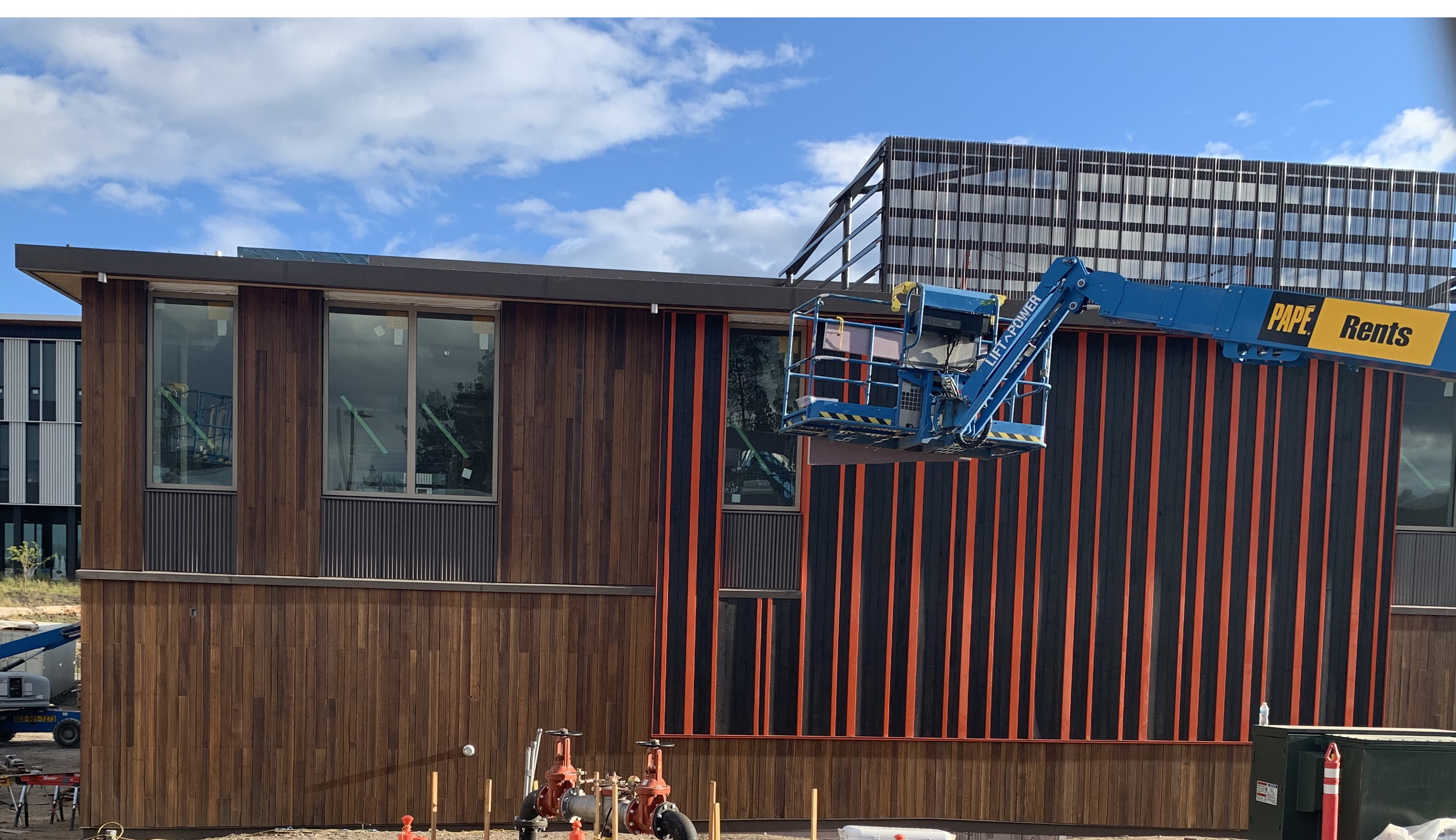
In 2023 Opsis Architecture contacted Pioneer Millworks to recommend materials for a proposed cladding project on the campus of Oregon State University.
“In general, when clients are searching for Shou Sugi Ban, they are looking for something with little to no maintenance that is a natural, planet-friendly product,” says Hall. “Opsis Architecture approached us looking for wood cladding options for their university client who was aiming for a highly sustainable design. They initially inquired about cedar. However, with the over-use of cedar and lower grade quality that comes from these faster growing trees Pioneer Millworks prefers local PEFC-Certified Larch, local FSC-Certified Douglas fir, and Cradle-to-Cradle Gold Accoya ® to cedar. All of these burn really well and are competitive to cedar in maintenance, so the switch was possible.”
Hall continued, “We started to talk about the which species because visually, they are all quite different. This particular project wanted something that was FSC-certified and had a more linear grain. They didn’t want anything overly rustic, and it had to be priced competitively. Which really made the vertical grain Douglass fir stand out as THE choice for this project.”
“Opsis selected our Toasted finish strictly based on color and because a lot of other buildings on the campus are a dark brown color,” says Hall. “Our toasted also happens to have one of the lightest pigment loads, which can make it a finish that fades quickly. But because this project is in central Oregon, which is hot, dry, high desert, the wood doesn’t tend to age gray, it ages to an amber through a darker brown. The Doug fir Toasted will continue to settle into that deep brown rich color over the lifetime of the building.”
There is an additional design segment of the building’s façade that alternates contrasting strips of the Shou Sugi Ban deep char finish with strips of an orange substrate expressing Oregon State University’s brand colors in large scale.
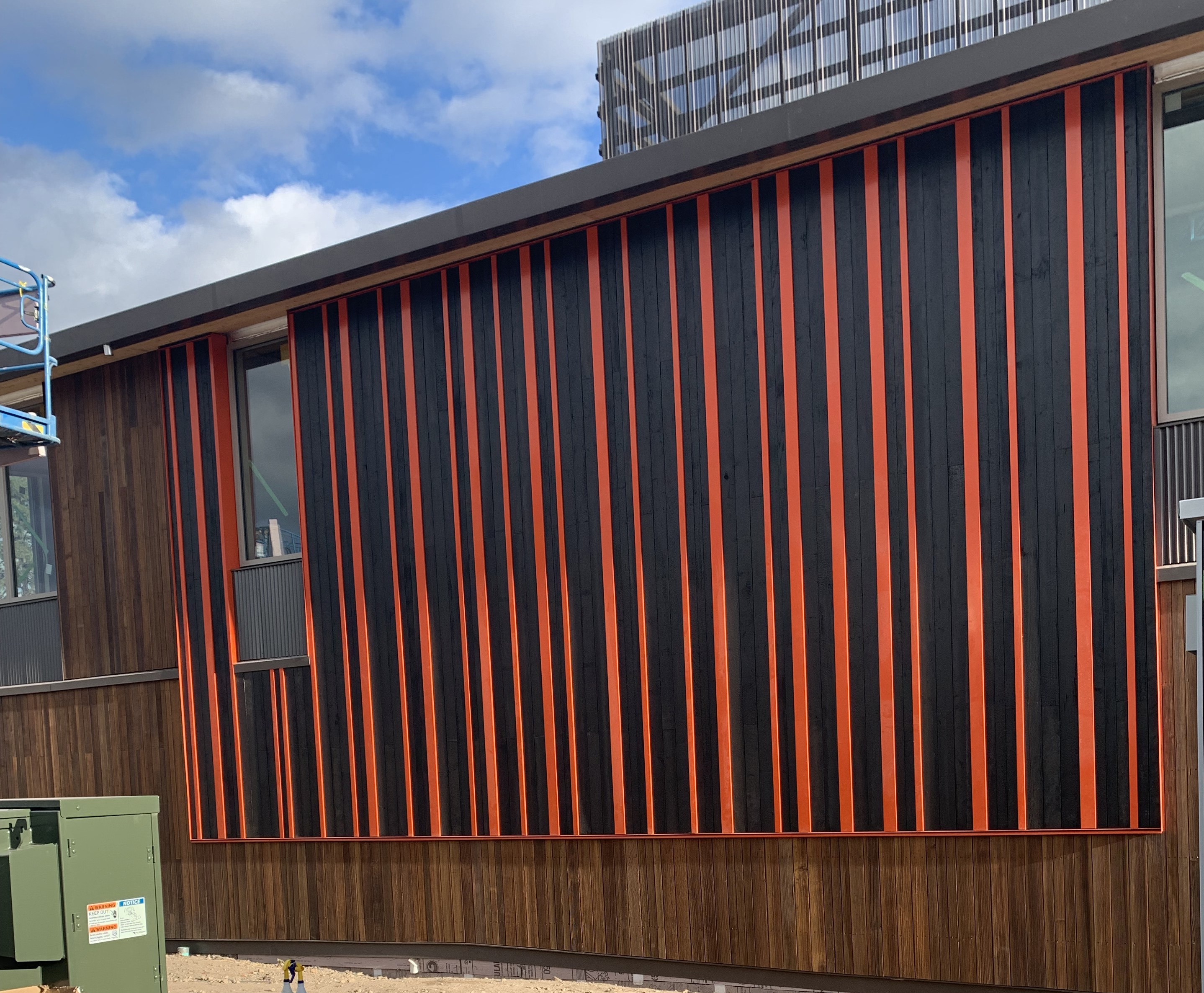
“For the vertical grade fir, it’s a 5” face. The client had us run a 60/40 split of 5” face and then 3” face boards and that was for both the fir toasted as well as the fir deep char. Being ¾” thick and a VG grade grants it stability that taken with the Shou Sugi Ban process, adds another level of stabilization when its burned. When you’re minimizing that seasonal movement, you’re not putting as much strain on the finish with the wood fiber expanding and contracting throughout the years.”
Hall continues, “with all of our different finishes, the maintenance program for Shou Sugi Ban will change based on your choice. Some of our finishes have a higher pigment load than others. Those with the less pigment load, they will blonde and age out quicker than something with a higher pigment load that can stand up to the UV designation and the weather.”
As illustrated by the Oregon State University building project, Pioneer Millworks Shou Sugi Ban siding and paneling can work with any design idea. Customizable from our species choices to our multitude of finishes, it can speak the language of any job, communicating all design intent whether a dream home or a university building.
“We mill to order so that gives us quite a bit of flexibility when we need to customize,” says Hall. “It’s a really nice benefit for architects and a tool for them to use. They can choose a material or finish that really helps the project stand out. My goal is always to help the designer achieve their vision and I think we were really able to do that with the OSU Student Success Center.


